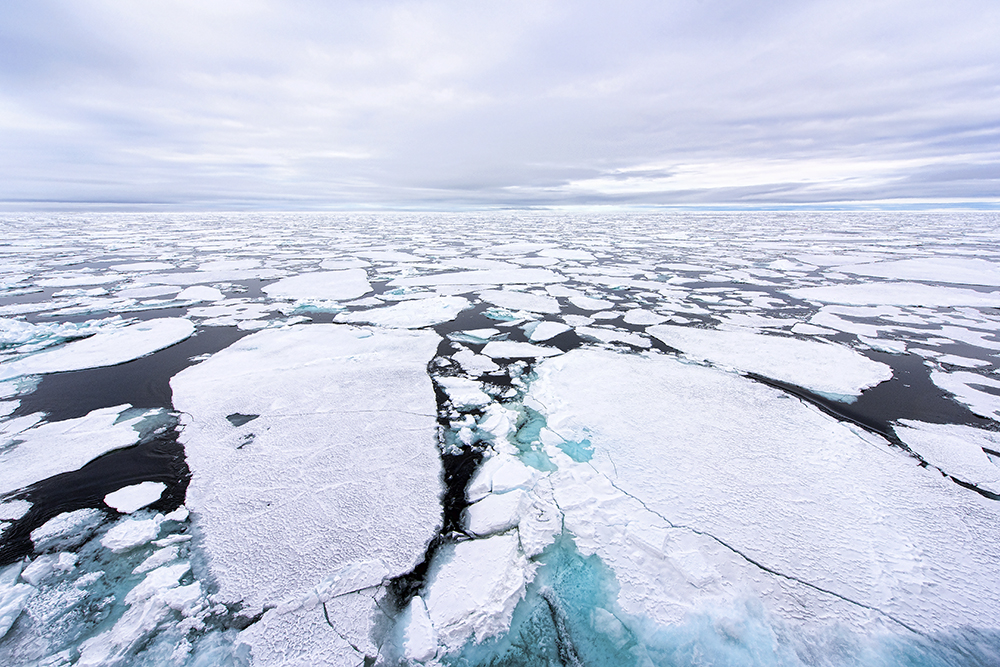How the Trump Administration Decides to Allow Risky Offshore Drilling
An explainer for the five-year planning process.

The federal government has jurisdiction over a huge expanse of ocean. It manages activities in these waters—generally from three to 200 miles from coastlines—including shipping, fishing, recreation, conservation, offshore wind energy… and offshore oil and gas.
Before an oil and gas company can drill an offshore well, it must acquire a lease for the part of the ocean where it wants to drill. And before an oil and gas company can acquire a lease, the federal government has to determine which areas of the ocean to make available for leasing. To do that, the Department of the Interior prepares a five-year program for oil and gas leasing.
The existing five-year program covers the period from 2017–2022. Even though it won’t expire for several years, the Trump administration wants to replace this plan with a new one. The new program will cover from 2019–2024 and is likely to greatly expand the ocean areas available for oil and gas leasing.
The Trump administration released a first draft of its 2019–2024 program back in January, and it is set to release a second draft in the coming weeks. Need a little help getting ready? Don’t worry—this blog will guide you through the five-year program process and explain how you can help.
Start with the basics: what’s a five-year program for offshore oil and gas leasing?
The federal government divides the United States’ ocean into 27 planning areas. In the five-year program, the Department of the Interior decides which of those areas will be made available for oil and gas leasing and sets a schedule of lease sales in those waters. A five-year program may specify that some areas of the ocean will not be eligible for oil and gas leasing during that time period. For those areas that are proposed for leasing, the five-year program establishes the size and timing of future lease sales. Before a new program can be finalized and implemented, the Secretary of the Interior must prepare multiple drafts and make them available for public comment. The Secretary must also analyze potential environmental effects of the plan and consider alternatives.
What’s wrong with the existing five-year program for 2017–2022?
The 2017–2022 program remains perfectly valid. It went through an extensive public process and scientific and legal review, and could remain effective for several more years. Nonetheless, the Trump administration has already taken steps to replace the existing program with a new one that will cover the years 2019–2024. The administration is doing this in an effort to expand offshore leasing to help achieve “energy dominance.” The law allows the administration to replace the plan, but there’s no reason to do so. The U.S. is already the world’s largest oil producer and U.S. production is at a 45-year high. There’s no need to jeopardize our ocean and coasts by expanding offshore drilling. Creating a new five-year program at this point is a waste of government resources and taxpayer dollars.
What sort of revised five-year program has the Trump administration proposed?
The Trump administration released the first draft of its 2019–2024 program in January 2018. The first draft proposed a massive and reckless expansion of offshore leasing. If implemented, it would make more than 90% of U.S. waters available to oil and gas companies, including the entire Atlantic and Pacific coasts, the entire Gulf of Mexico including off Florida’s Gulf coast, and all but one of Alaska’s fifteen planning areas. In contrast, the existing program permits leasing only in Cook Inlet (in Alaska) and the Central and Western Gulf of Mexico (not off Florida’s coast).
How did people react to the draft proposed program?
People all across the country—including Republican and Democratic governors of coastal states, the Department of Defense, local communities and millions of concerned ocean advocates—spoke out against the Trump administration’s draft proposal. People know offshore drilling is risky business. They recognize our ocean is a vital food source and a powerful economic driver. As we saw with the 2010 BP oil disaster in the Gulf of Mexico, an offshore oil spill can devastate coastal tourism, seafood sales and property values. In Alaska, the governor, congressional delegation, House of Representatives, tribes, North Pacific Fishery Management Council, and others all requested that the administration remove planning areas that are important for commercial fisheries, subsistence and other uses.
What’s the next step for the proposed 2019–2024 leasing program?
Now that people have commented on the first draft, the Trump administration will release a second draft of its 2019–2024 leasing program in the coming weeks, probably before the end of the year. Relative to the first draft, it’s possible—even likely—the revised draft will propose fewer ocean areas for future leasing. But remember: the first draft should never have included so much of our ocean in the first place. Even if the second draft of the proposed program is smaller in scope than the first draft, we should still be prepared for a plan that proposes a huge expansion of offshore oil and gas leasing relative to the existing program.
What can I do?
When the second draft comes out, there will be a public comment period. You will have a chance to voice your concerns about the potential impacts of offshore leasing and drilling. These impacts include the risk of another massive oil spill and the continued production and burning of fossil fuels that will accelerate the threat of climate change. This will be a critical time to make your voice heard. After the public comment period closes, the Trump administration plans to finalize the 2019-2024 program so that it can begin implementing it next year.
It’s time to tell the Trump administration not to open new areas of the ocean to risky, offshore drilling. Take action now!